Comb Ridge - Monarch Cave
A marvelous trip to see the Monarch Cave Ruins in Southeastern Utah.
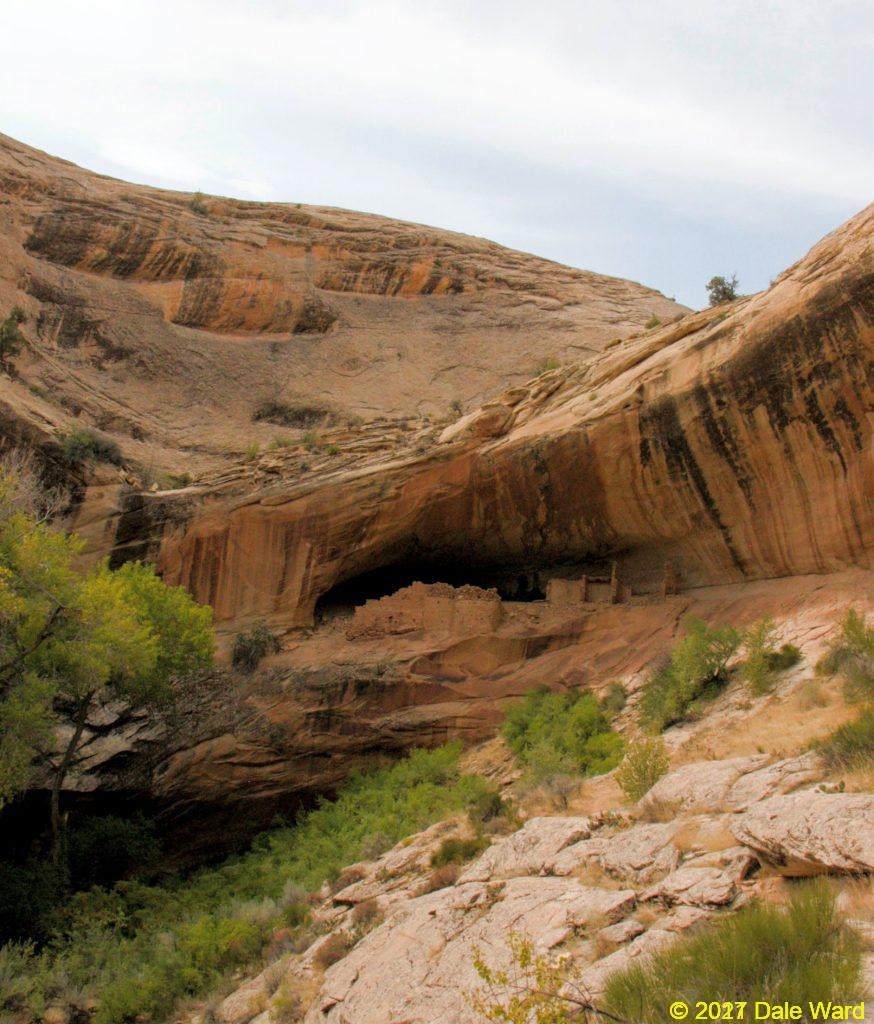 Monarch Cave Ruins, on Comb Ridge. There is a large pool of water around the base of the tree in the left of the photo.
Monarch Cave Ruins, on Comb Ridge. There is a large pool of water around the base of the tree in the left of the photo.
This hike was part of my recent trip to Comb Ridge. Though I’ve seen ruins on Comb Ridge in my previous trips, the ruins had not been my main goal. I was mostly going to see the country, and if I stumbled upon ruins, well, it was a bonus.
This time I decided to actually visit known ruins. And, first up - Monarch Cave Ruins.
It was a short, easy hike up a side canyon of Butler Wash. Nicely shaded, on a relatively wide trail.
The ruins were easily visible from the trail, and were spectacular.
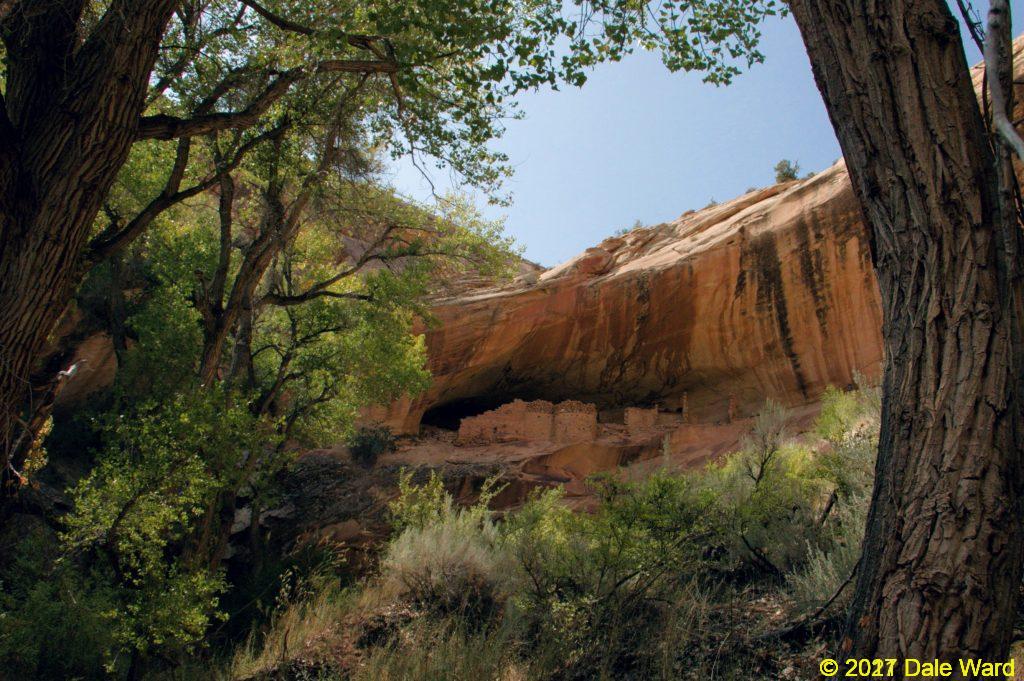 View from the hike in to the Monarch Cave Ruins.
View from the hike in to the Monarch Cave Ruins.
I hiked up the steep rock and ended up on a wide ledge to the right of the main ruins. The remains of other ruins were all around on this ledge, as well as metates and other signs of life.
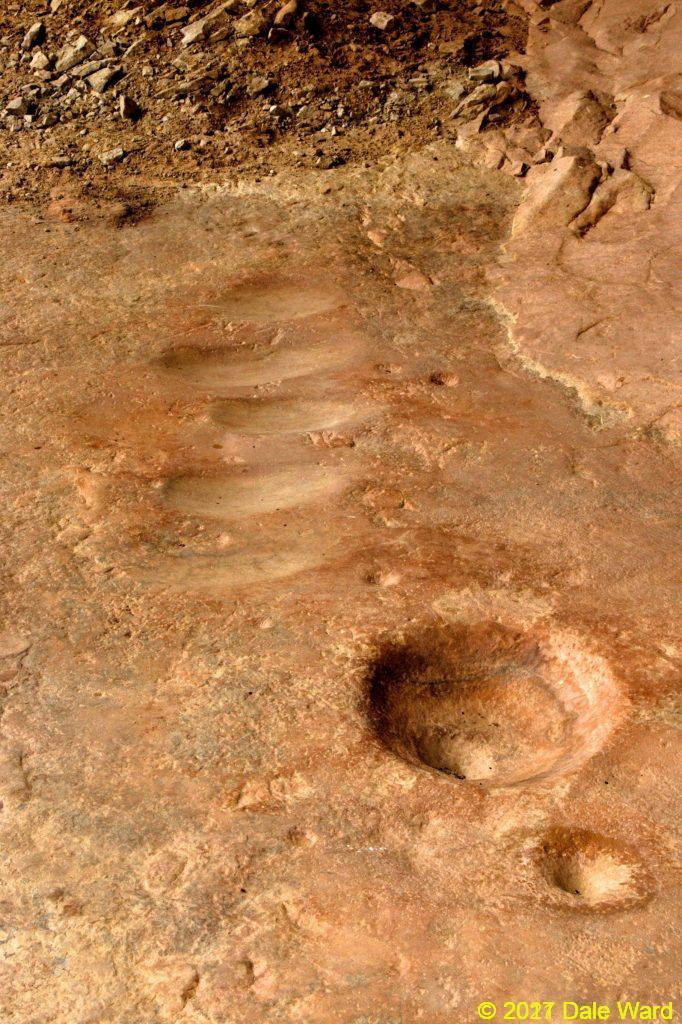 Metates (“meh-tah-tay”) - depressions in the sandstone where the Ancients would grind corns and grain. They’d use a stone, called a “mano”, in the same way that we use a mortar and pestle now. There are five of the ‘trough’ style metate, and at least two of the ‘bowl’ style metate. I’ve not seen the ‘bowl’ style before. desert.com has an interesting discussion of these.
Metates (“meh-tah-tay”) - depressions in the sandstone where the Ancients would grind corns and grain. They’d use a stone, called a “mano”, in the same way that we use a mortar and pestle now. There are five of the ‘trough’ style metate, and at least two of the ‘bowl’ style metate. I’ve not seen the ‘bowl’ style before. desert.com has an interesting discussion of these.
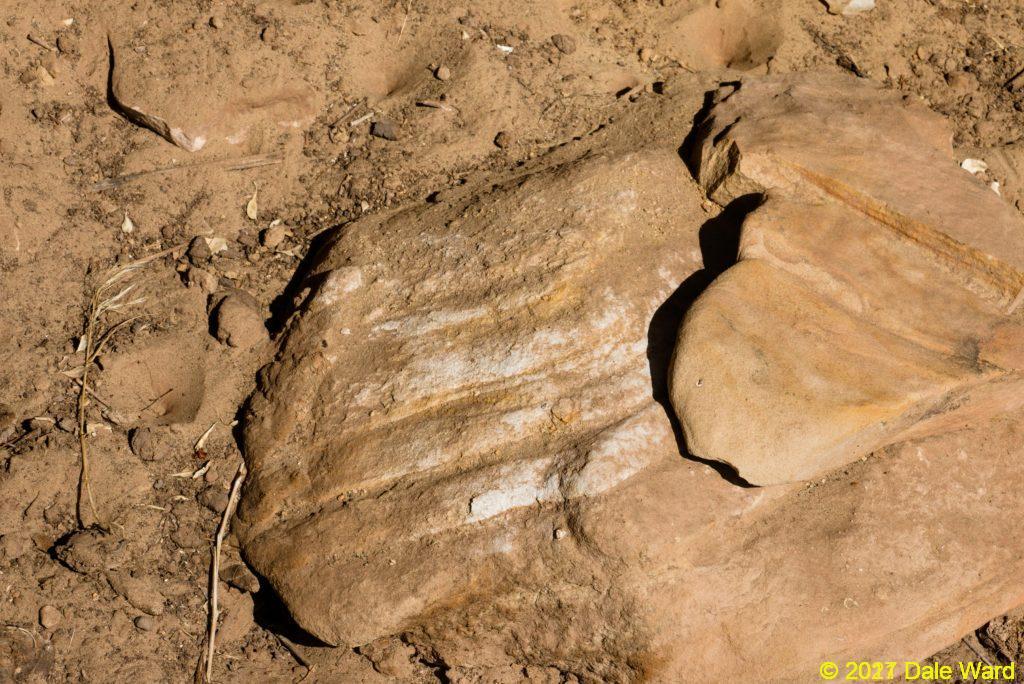 Grooves in a rock on the way in to the ruins. I’ve heard these grooves described as “sharpening grooves” - places where the ancients would work bone and wooden spear points to make them sharper. There were also metates on nearby. To the left of the sharpining stone, you can see a small, circular pit depression in the sand. That’s a trap dub by an Ant Lion larva. Kind of cool, the way it looks a bit like a circular metate.
Grooves in a rock on the way in to the ruins. I’ve heard these grooves described as “sharpening grooves” - places where the ancients would work bone and wooden spear points to make them sharper. There were also metates on nearby. To the left of the sharpining stone, you can see a small, circular pit depression in the sand. That’s a trap dub by an Ant Lion larva. Kind of cool, the way it looks a bit like a circular metate.
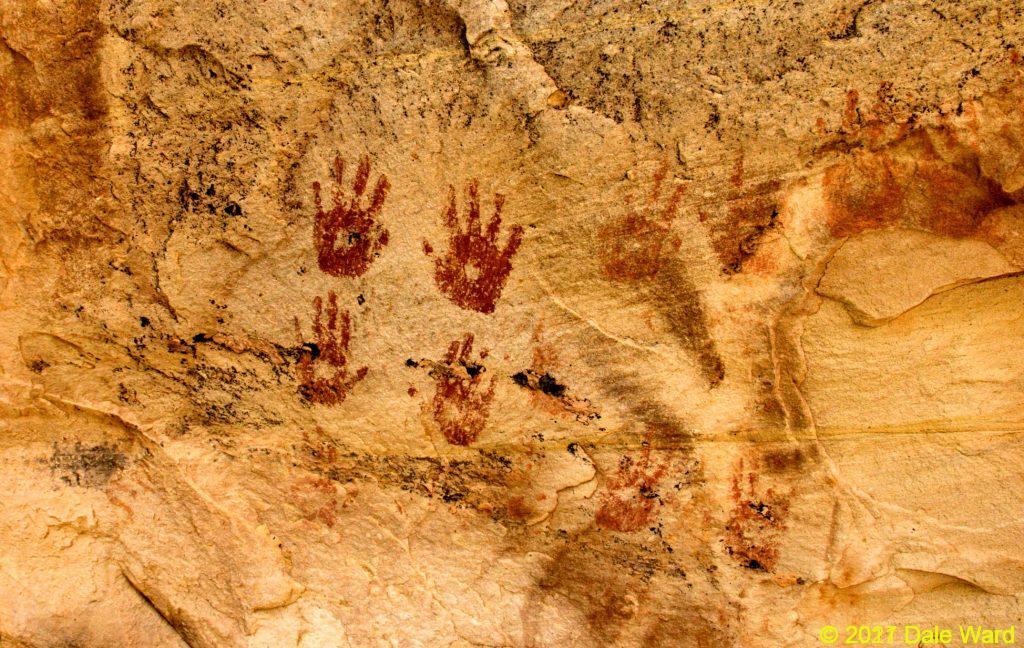 Pigmented hand prints on the back (cave) walls of a ruin. There was not a lot of this ruin left standing, but you could still see the outlines of where it was.
Pigmented hand prints on the back (cave) walls of a ruin. There was not a lot of this ruin left standing, but you could still see the outlines of where it was.
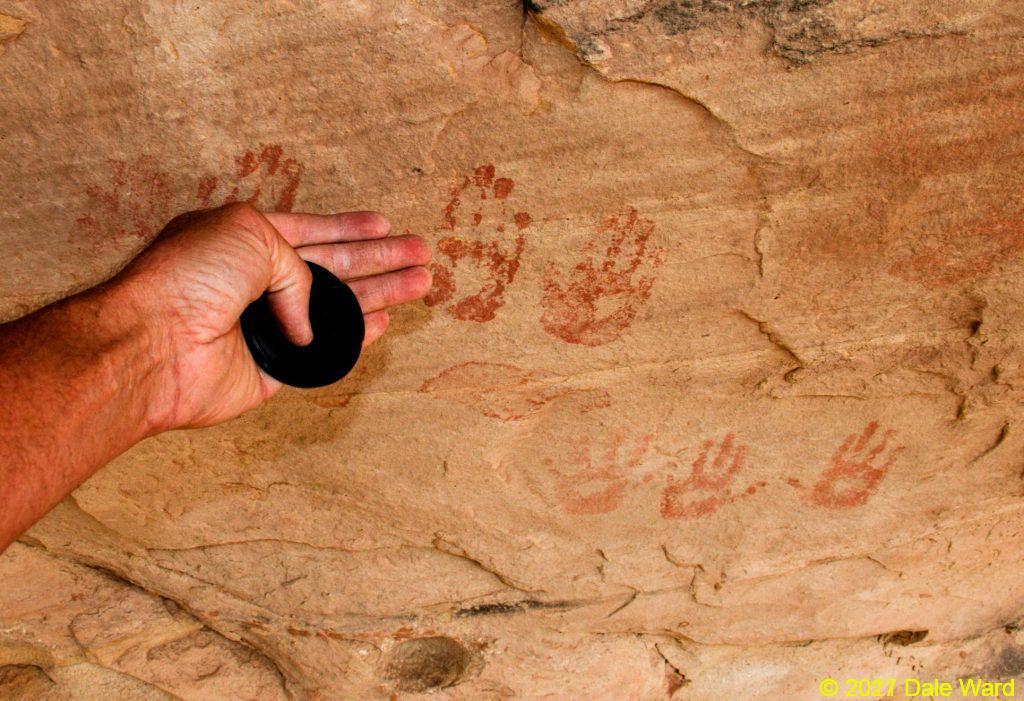 Pigmented hand prints on the cave wall, with my hand for scale. It looks like the pigmented hand prints are those of children.
Pigmented hand prints on the cave wall, with my hand for scale. It looks like the pigmented hand prints are those of children.
The main ruins were accessible by a narrow, easily defensible ledge. I’ve heard that in the recent past this narrow ledge was blocked off by a chain, but there was no chain across the trail when I was there. I still didn’t go across the ledge, though - the ruins looked too fragile, and I did not want to risk damaging them.
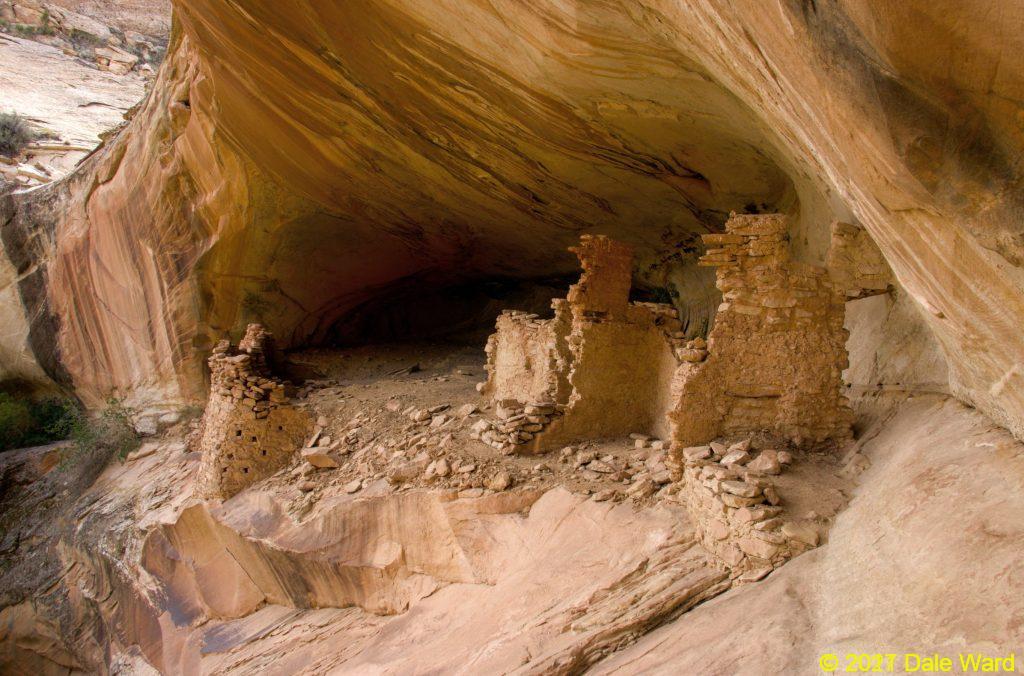 Closer view of the main Monarch Cave Ruins. You can see the thin path on the cliff wall in front of me, leading to the ruins. If you look closely, you can see a wooden lintel still in place in the doorway. I did not use the path to get closer to the ruins - I would be terrified of knocking over the fragile walls.
Closer view of the main Monarch Cave Ruins. You can see the thin path on the cliff wall in front of me, leading to the ruins. If you look closely, you can see a wooden lintel still in place in the doorway. I did not use the path to get closer to the ruins - I would be terrified of knocking over the fragile walls.
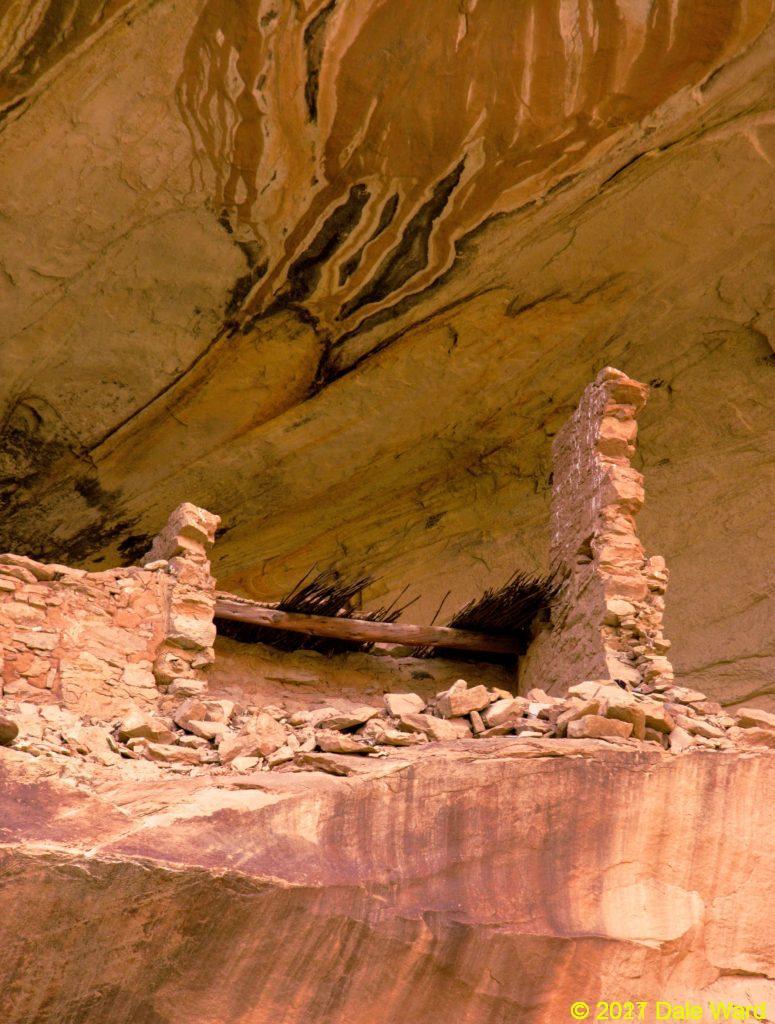 Looking up at the Monarch Cave Ruins from the pond at the foot of the cliffs. I used a big lens for this - I’m a lot further from the ruin than it looks. You can see a wooden beam with sticks forming a roof on the ruin. I’m not sure how much of that is original. My assumption is that the beam is original (and built into the wall. Perhaps the sticks are original? Or were they put in place recently?
Looking up at the Monarch Cave Ruins from the pond at the foot of the cliffs. I used a big lens for this - I’m a lot further from the ruin than it looks. You can see a wooden beam with sticks forming a roof on the ruin. I’m not sure how much of that is original. My assumption is that the beam is original (and built into the wall. Perhaps the sticks are original? Or were they put in place recently?
I spent a little time at the ruins, then scrambled down to the base of the the cliff. There was a fairly large (60 feet diameter?) pool at the base of the cliff, surrounded by trees. I could just barely see the main ruins from the pool.
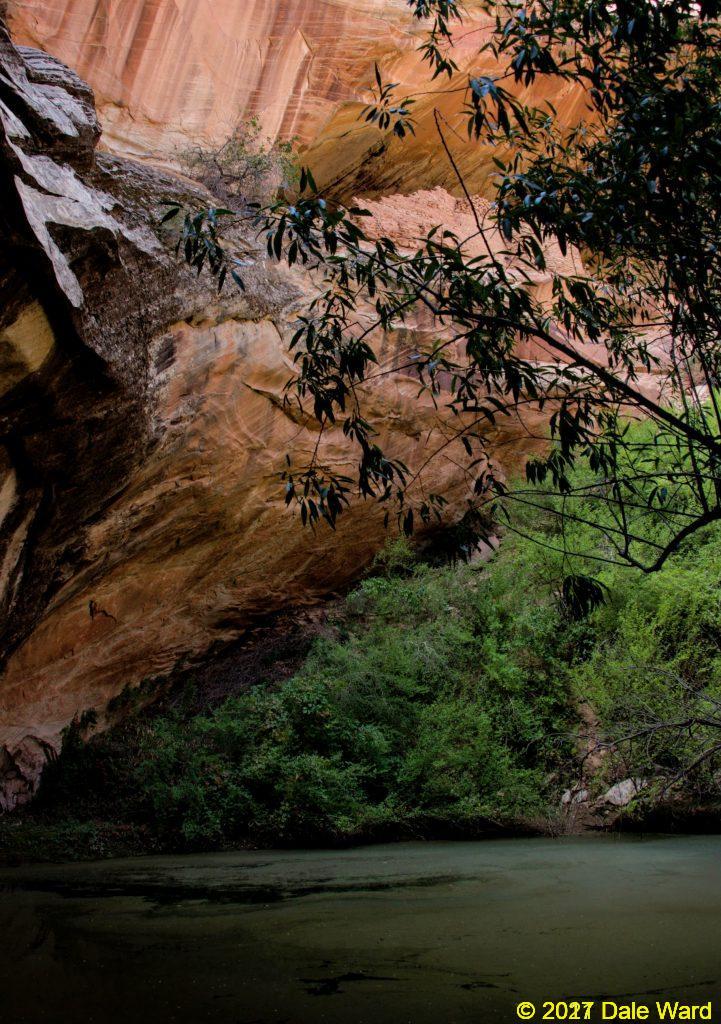 Looking up the cliff from the pool (lower part of picture) to the Monarch Cave Ruins (upper right of picture).
Looking up the cliff from the pool (lower part of picture) to the Monarch Cave Ruins (upper right of picture).
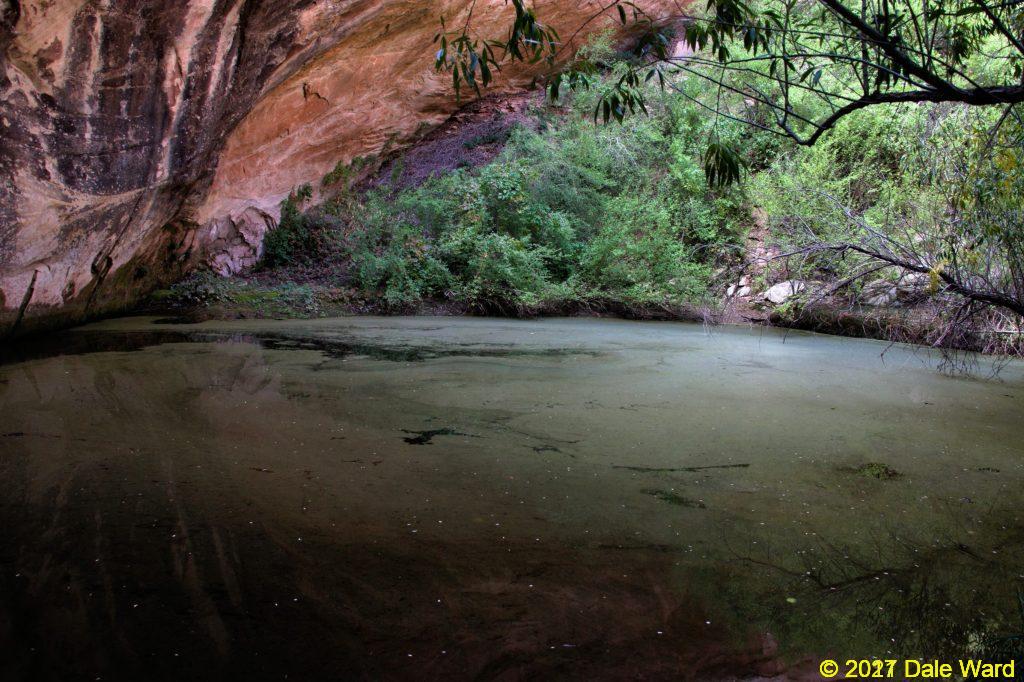 The pool at the foot of the Monarch Cave cliff. The ruins are just above this pool of water. The residents of the ruin might have been able to lower a jar on a rope to get water without descending the cliff - but I’m not sure if the angles would be quite right.
The pool at the foot of the Monarch Cave cliff. The ruins are just above this pool of water. The residents of the ruin might have been able to lower a jar on a rope to get water without descending the cliff - but I’m not sure if the angles would be quite right.
There was a layer of dust and pollen on the surface of the water, but the water in the pool was much cleaner than it looks in the photos above.
What a wonderful trip this was.